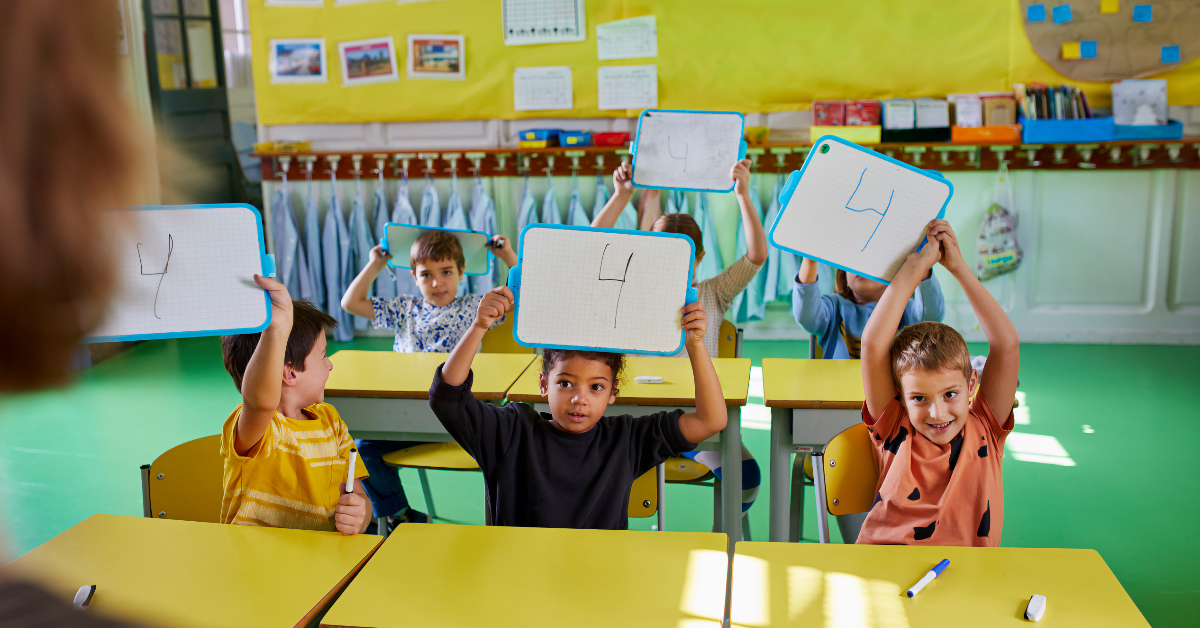
“Help! I have to solve a word problem!” If this plea sounds familiar, then this blog post is for you.
You’re working on a set of math problems, just rolling along, when, all of a sudden, the numbers change into words. Perhaps this is not an issue for you—you just shift gears and keep going, working through the problems with relative ease. For many students, however, word problems bring feelings of nervousness, helplessness, confusion, or even dread. If you or your student struggles with word problems, here are several suggestions that may help.
Read
Take a deep breath and don’t think about math for a moment. Sit back, relax, and simply read the problem as you would a story, familiarizing yourself with the situation and getting a sense of what’s happening. Some people find it helpful to read the problem aloud or act it out as an aid to understanding; other students may need to have the problem read to them. Consider the following word problem as an example:
Maria needs $1.93 to mail a package. All she has in her desk drawer are 42¢-stamps,
13¢-stamps, and 2¢-stamps. Find the combination of stamps that will give the postage
Maria needs for the package.
As you read the problem, you might picture Maria pulling the stamps out of the drawer and arranging them into groups. You also determine that she has to choose a certain number from each group to put on the package. Notice that there’s no actual work involved yet; you’re just developing an overall understanding of Maria’s situation.
Organize the Information
Once you know what the problem is about, you can begin organizing the information. List everything that could be helpful, whether it’s something in the problem or a mathematical fact that you already know. A list of information for the sample problem might look like this:
• Maria needs $1.93.
• She has 3 different kinds of stamps (42¢, 13¢, and 2¢).
• You can also write the values of the stamps as $0.42, $0.13, and $0.02.
• There are 100 cents in a dollar.
Notice that the first two pieces of information are directly from the problem, while the last two are mathematical facts that might prove useful.
Determine What You Need to Find
As with most things in life, knowing your goal or objective helps you focus your efforts and make sure you find the correct answer. Generally, what you need to find in a problem is presented as a question or a set of instructions, which you can underline or highlight to help you target the desired result. In the problem given, for example, you are instructed to find the combination of stamps that Maria needs. Sometimes, after completing this step, the student may discover that he has gathered extraneous information (such as the fourth item above), which will not help him find the answer and can therefore be removed from the list.
Solve the Problem
Now you are ready to find the answer. Often this means performing computations, but for some problems, drawing a diagram or setting up a chart or table may be helpful. Students often wonder at this point which operation to use (addition, subtraction, multiplication, or division). If an understanding of the problem has already been established, common sense is the best guide. Are quantities being put together, or will the result be a greater amount? Then addition or multiplication will most likely be used. Is an amount being separated from a whole, or will the amount be less? Subtraction or division are definite possibilities. Some teachers recommend finding key words to determine the appropriate operation. While Math-U-See does refer to this technique, it should never be used as the primary means for solving a problem. Depending on key words alone does not encourage students to think mathematically about a problem or use logic to reason toward a solution; furthermore, it is not a foolproof method. You will notice that none of the standard key words appear in Maria’s stamp problem, and while the word “combination” might serve as a clue that you need to add, you will discover that other operations are also needed in order to solve the problem correctly.
So how would the sample problem be solved? Actually, there are several different ways that are equally valid. A student could use guess-and-check, perhaps entering different values in a chart and computing various combinations until the desired one is found. Another student might use a more systematic approach, first dividing 0.42 into 1.93, then dividing 0.13 into the remainder, and dividing that remainder by 0.02 to find the correct number of stamps. Whatever method is used, it is important that the student feel comfortable tackling the solution with the tools and strategies in his mathematical repertoire. (The solution for the sample problem, by the way, is four 42¢-stamps, one 13¢-stamp, and six 2¢-stamps.)
Check the Solution
There is one more important step to solving any mathematical problem: check the solution. First, make sure that the question posed has been answered. For example, it would not be sufficient for the student simply to give the number of 42¢-stamps as his answer to the sample problem when he has been asked for the entire combination. Second, make sure the answer is reasonable. It would not make sense, in the sample problem, for Maria to need twenty 42¢-stamps because estimating would tell you that this amount would be approximately $8.00—much more than is needed for the package. Finally, if the solution is given in an answer key and the student’s response does not match, take the time to find out why. Discuss the problem and the student’s solution and adjust any misunderstandings.
While word problems may be challenging, they give students the opportunity to apply and practice the skills they have learned to real-world situations. This is excellent preparation for adult life, where people are regularly called upon to solve problems in both their personal and professional lives. Therefore, don’t be tempted to skip or skim over math word problems. Use the suggestions presented here, rise to the challenge, and persevere!




Leave a Reply